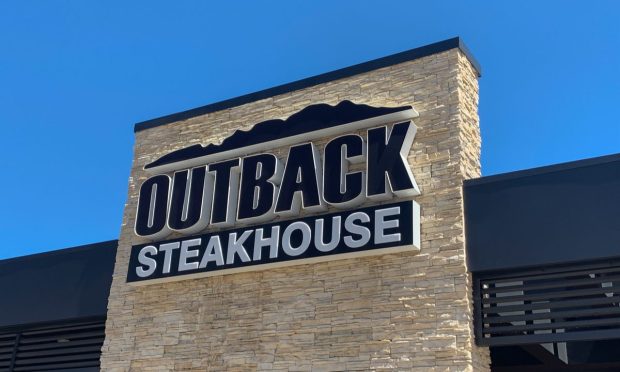Amid Disappointing Results, Outback Steakhouse Parent Touts ‘Honed and Refined’ Digital Sales Margins

With off-premises ordering proving sticky, Bloomin’ Brands, parent company of several casual dining chains including Outback Steakhouse and Carrabba’s Italian Grill, is finding ways to make the economics of the various channels work in its favor. Still, the company is underperforming, and investors are taking note.
Christopher Meyer, the company’s executive vice president and chief financial officer, told analysts on a call Tuesday (Nov. 2) discussing the company’s third-quarter results that, by driving acquisition with third-party channels and off-setting the low margins of the channel with carryout and curbside pickup sales, the company is running an off-premises business that is approaching the dine-in business’s profitability.
“The important thing for us is, the curbside experience, in some of our calculus is actually a little better than our in-restaurant margin, just given the lack of service labor,” Meyer said. “So, I think we’ve really honed and refined margins for our off-premises opportunity curbside leading the way with that, and it does help to offset some of the lower margin third-party.”
He added that the margins of third-party delivery are “not prohibitively low,” noting that, by increasing menu prices on the platforms, the company is able to make the economics of the channel work, benefitting from these marketplaces’ ability to draw in new customers.
The effectiveness of these pricing actions could change, however, as local legislatures continue to regulate third-party delivery services. In October, for instance, a California bill requiring these aggregators to show consumers an itemized breakdown of costs and fees was passed by Governor Gavin Newsom, though restaurants are not required by the bill to offer the same transparency in their pricing.
Research from the PYMNTS 2021 Restaurant Readiness Index shows that aggregators now generate 16% of the average restaurant’s revenue — more than in-restaurant, pickup, mobile order-ahead, outdoor dining, delivery through the restaurant’s own platform or phoned-in delivery orders. While this mix is higher for chain quick service restaurants (QSRs) and lower for independent restaurants with table service, restaurants such as Bloomin’ Brands’ — chain restaurants with table-service—are in line with the overall restaurant industry average.
Read more: Average Quick-Service Restaurant Now Takes up to 75% of Orders Remotely
In the quarter, the delivery business made up 10% of Bloomin’ Brands’ U.S. revenues. Overall, off-premises orders accounted for 27% of sales in the country, just 1 percentage point below the previous quarter, and 70% of these sales were through digital channels, up more than 250% from pre-pandemic levels.
Findings from PYMNTS’ How We Eat playbook, created in collaboration with Carat from Fiserv, show that consumers now are 31% more likely to buy meals for delivery or pickup than they are to dine on-site, and 47% of consumers reported that they had ordered delivery in the last month. Additionally, the study, which featured a census-balanced survey of more than 5,200 U.S. consumers, noted that 82% of restaurant customers plan to maintain their digital habits at least “somewhat” as often as they do now, even after the pandemic is over completely.
See also: Up for Grabs: Restaurants and Grocers See Path to Picking up 200 Million New Customers
Overall, the company’s stock price fell almost 12% following the earnings report, with investors noting the chain’s under-performance relative to leading estimates. The company noted that increased ingredient and labor costs factored into these results, as did its reduction in marketing and the rise of the delta variant.
